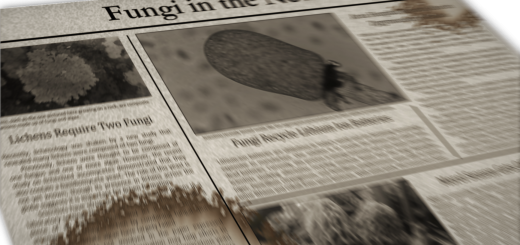#077: Ericaceous Mycorrhizae
Many plants in the order Ericales (which includes blueberries, rhododendrons, heaths, heathers, tea, and Brazil nut) form unique mycorrhizae. These plants are frequently found living in harsh conditions, like acidic or highly acidic soil. Their aptitude for these types of habitats is likely due to their unique mycorrhizae. There are actually three types of mycorrhizae formed by these plants: ericoid, arbutoid, and monotropoid.
The most commonly found type of mycorrhiza among the Ericales is the ericoid mycorrhiza. Plants that form ericoid mycorrhizae produce special “hair roots” to house the symbiosis. Each hair root is very thin, only consisting of a few one-cell-thick layers: an outer exodermis, an endodermis, and a few vascular tissues at the center. Ericoid mycorrhizal fungi are only permitted to colonize mature epidermal cells in the exodermis, so colonization happens well behind the growing root tip. The mycorrhizal fungus forms a web of hyphae around the mature part of the root, much like a reduced mantle of an ectomycorrhizal fungus. Fungal hyphae then penetrate the epidermal cells at multiple points and forms coils within the cell. As with other types of mycorrhizae, the plant’s cell membrane remains intact and fits over the coils of hyphae like a glove. These coils of hyphae serve to increase the surface area available for nutrient exchange. The fungi involved in ericoid mycorrhizae are mostly from the phylum ascomycota, but include a few basidiomycota as well. Either way, the fungal partner tends to be saprophytic and can be grown in a lab. These fungi likely help their partners to survive by breaking down normally inaccessible organic compounds found in the soil. This frees up organic nitrogen and phosphorous, which the fungus can share with its mycorrhizal partner.
Arbutoid mycorrhizae are found in two genera of the Ericales family Ericaceae (Arbutus and Arctostaphylos) as well as a few other species in the Ericales. This type of mycorrhiza is remarkably similar to an ectomycorrhiza. The plants involved have quickly-growing long roots that support slowly-growing, highly-branched short roots. Formation of arbutoid mycorrhizae begins when the fungus forms a thick layer of hyphae, called a mantle, over a short root. The fungal hyphae then penetrate the root and grow around the cells. Hyphae between the cells are interconnected, forming a structure known as a Hartig net. Unlike ectomycorrhizae, however, arbutoid mycorrhizae also penetrate the outer layer of root cells. The fungi form loops within the plant cells but, as usual, the plant’s cell membrane coats the outside of the fungal hyphae. Both the Hartig net and the intracellular loops increase the surface area available for nutrient exchange. Based on the similarity between arbutoid mycorrhizae and ectomycorrhizae, it is not surprising that the fungi involved in arbutiod mycorrhizae are basidiomycetes, often ones that form ectomycorrhizae with other plants.
Monotropoid mycorrhizae are found in the genus Monotropa and a number of other closely related genera within the family Ericaceae. One remarkable characteristic that all these plants share is that they do not have chlorophyll. All these small understory plants have highly reduced leaves and only appear above ground to produce flowers and seeds. The main body of the plant is a root system consisting of densely-packed, mycorrhizal roots. This means that the plants are actually parasitic on the fungus (mycoheterotrophic). Two of the most widely known monotropoid mycorrhizal plants are the Ghost Plant (a.k.a. Indian Pipe or Corpse Plant, Monotropa uniflora) and the pinedrops (Pterospora spp.). The fungi involved in monotropoid mycorrhizae seem to be basidiomycetes that also form ectomycorrhizae, so they easily deal with the loss of carbon by obtaining extra sugars from their ectomycorrhizal tree partner. As a result of this three-member relationship, plants that form monotropoid mycorrhizae are usually found under pines, spruces, and firs, but may also occur under oaks, beeches, and cedars. In monotropoid mycorrhizae, fungal hyphae form a dense sheath around the root, usually covering the root tip. The fungi then form a Hartig net around the outermost layer of epidermal cells. Unlike other ericaceous mycorrhizae, the fungal cells do not penetrate the cell wall at this point. Instead, the cell wall grows in towards the center of the cell, forming a V-shaped cavity into which a fungal hypha grows. This unique structure is known as a “fungal peg.” The plant’s cell wall then forms many, spaghetti-like protrusions from the edges of the fungal peg and into the plant cell. Similar cell wall structures can be found in plant cells known as “transfer cells,” which are specialized for nutrient transfer. Presumably, the fungal peg and cell wall protrusions serve to help extract nutrients from the fungus. Toward the end of the growing season, the tip of the fungal peg bursts, allowing a membranous sac of fungal cytoplasm to come into contact with the cell membrane of the plant cell. The specifics of fungal peg bursting have yet to be worked out, but it appears to provide the plant with extra nutrients needed for seed production.
See Further:
http://website.nbm-mnb.ca/mycologywebpages/NaturalHistoryOfFungi/Mycorrhizae.html
http://www.davidmoore.org.uk/assets/mostly_mycology/diane_howarth/arbutoid.htm
http://www.davidmoore.org.uk/assets/mostly_mycology/diane_howarth/ericoid.htm
http://www.davidmoore.org.uk/assets/mostly_mycology/diane_howarth/monotropoid.htm
http://link.springer.com/article/10.1023/A%3A1020289401610#page-1








![#011: Characteristics of Kingdom Fungi [Archived]](https://www.fungusfactfriday.com/wp-content/themes/hueman/assets/front/img/thumb-small-empty.png)
